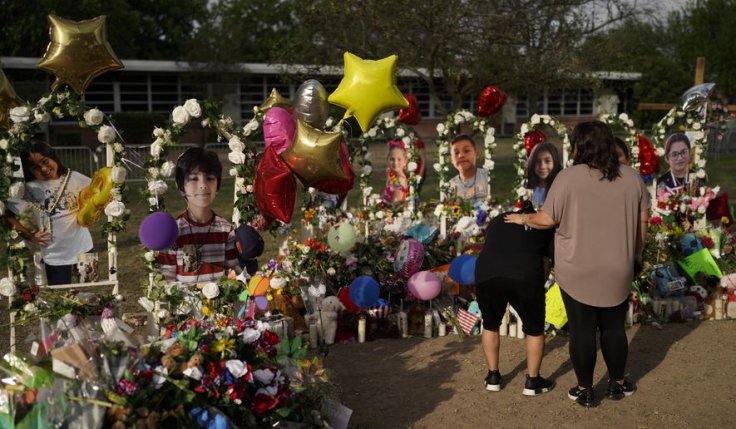An Uvalde police officer asked for a supervisor's permission to shoot the gunman who would go on to gun down 21 people at Robb Elementary School in May before he entered the building.
However, the supervisor failed to respond, according to a report released Wednesday evaluating the law enforcement response to the shooting.
Supervising Officer 'Either Did Not Hear or Responded Too Late'

The gunman, an 18-year-old with an AR-15-style semi-automatic rifle, entered the building at 11:33 a.m. Before that, the Uvalde police officer, who the report did not identify, saw the gunman carrying a rife toward the west hall entrance.
The officer asked a supervisor for permission to open fire, but the supervisor "either did not hear or responded too late," according to the report released Wednesday by the Advanced Law Enforcement Rapid Response Training Center, located at Texas State University in San Marcos.
When the officer turned back toward the gunman, he had already gone inside "unabated," according to the report. The officer was 148 yards away from the door, which the report said was within the range of his rifle, and allegedly said he was concerned that an errant shot could have penetrated the school and injured students inside.
Uvalde Police Had Several Missed Opportunities to Stop Gunman

Authors of the 26-page report said their findings were based off video taken from the school, police body cameras, testimony from officers on the scene and statements from investigators.
The report provides a host of new details about the May 24 shooting, including several missed opportunities to engage or stop the gunman before he entered the school. The lack of response to the officer's request to shoot the suspect outside the school was the most significant new detail that the report revealed.
"A reasonable officer would conclude in this case, based upon the totality of the circumstances, that use of deadly force was warranted," according to the report. The report referred to the Texas Penal Code, which states an individual is justified in using deadly force when the individual reasonably believes the deadly force is immediately necessary to prevent the commission of murder.
The report said one of the first responding officers — a Uvalde school district police officer — drove through the school's parking lot "at a high rate of speed" and didn't spot the gunman, who was still in the parking lot. The report said the officer might have seen the suspect if he had driven more slowly or parked his car at the edge of the school property and approached on foot.
Uvalde Police's Flawed Response to Shooting
The report is one of multiple investigations launched in the aftermath of the worst school shooting in Texas history. Pete Arredondo, the law enforcement official that state police said was most responsible for the flawed response to the Uvalde elementary school shooting, resigned from the Uvalde City Council earlier this month.
The school district placed Arredondo on administrative leave June 22, the day after Department of Public Safety Director Steve McCraw told a state Senate committee that police officers under the command of Arredondo could have ended the shooting within minutes of arriving, but the chief made "the wrong decision" not to do so.

It took more than an hour until law enforcement officers, including agents in a Border Patrol tactical unit, acting on their own initiative, entered the classroom and killed the gunman. In a lengthy interview with The Texas Tribune last month, Arredondo maintained he was not the incident commander and never ordered officers to stand down.
He said he acted decisively as one of the first officers to arrive on scene but was thwarted by a classroom door he determined was locked. Arredondo said he then focused his efforts on finding a key that would open it, a process that took more than 40 minutes.
McCraw, the head of the state police, said last week that the doors were designed so they could not be been locked from the inside. Officer body camera and school surveillance footage reviewed by the Tribune do not support some of Arredondo's claims. At no point before officers breached the classroom does Arredondo or any other officer try to turn the handles to the doors of the adjoining classrooms where the shooter was.









